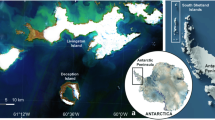Abstract
We investigate the issues and methods for estimating nearshore bathymetry based on wave celerity measurements obtained using time series imagery from small unmanned aircraft systems (SUAS). In contrast to time series imagery from fixed cameras or from larger aircraft, SUAS data are usually short, gappy in time, and unsteady in aim in high frequency ways that are not reflected by the filtered navigation metadata. These issues were first investigated using fixed camera proxy data that have been intentionally degraded to mimic these problems. It has been found that records as short as 50 s or less can yield good bathymetry results. Gaps in records associated with inadvertent look-away during unsteady flight would normally prevent use of the required standard Fast Fourier Transform methods. However, we found that a full Fourier Transform could be implemented on the remaining valid record segments and was effective if at least 50% of total record length remained intact. Errors in image geo-navigation were stabilized based on fixed ground fiducials within a required land portion of the image. The elements of a future method that could remove this requirement were then outlined. Two test SUAS data runs were analyzed and compared to survey ground truth data. A 54-s data run at Eglin Air Force Base on the Gulf of Mexico yielded a good bathymetry product that compared well with survey data (standard deviation of 0.51 m in depths ranging from 0 to 4 m). A shorter (30.5 s) record from Silver Strand Beach (near Coronado) on the US west coast provided a good approximation of the surveyed bathymetry but was excessively deep offshore and had larger errors (1.19 m for true depths ranging from 0 to 6 m), consistent with the short record length. Seventy-three percent of the bathymetry estimates lay within 1 m of the truth for most of the nearshore.






Similar content being viewed by others
References
Dean RG, Dalrymple RA (1991) Wave wave mechanics for engineers and scientists, 353 pp., World Scientific Publishing, Cornell
Dugan JP, Piotrowski CC, Williams JZ (2001) Water depth and surface current retrievals from airborne optical measurements of surface gravity wave dispersion. J Geophys Res 106(C8):16903–16915
Feddersen F, Guza RT (2003) Observations of nearshore circulation: alongshore uniformity. J Geophys Res 108(C1):3006
Holland KT (2001) Application of the linear dispersion relation with respect to depth inversion and remotely sensed imagery. IEEE Trans Geosci Remote Sens 39(9):2060–2072
Holland KT, Holman RA, Lippmann TC, Stanley J, Plant N (1997) Practical use of video imagery in nearshore oceanographic field studies. IEEE J Ocean Eng 22(1)
Holland KT, Lalejini DM, Spansel SD, Holman RA (2010) Littoral environmental reconnaissance using tactical imagery from unmanned aircraft systems, paper presented at SPIE Defense Security and Sensing Conference, SPIE, Orlando
Holman RA, Stanley J (2007) The history and technical capabilities of Argus. Coast Eng 54:477–491
Pennucci G, Conley DC, Holman RA (2008) Quantitative image analysis for maritime missions using an autonomous distributed sensor system, in Fusion 2008, edited, p. paper #256907519, Cologne.
Piotrowski CC, Dugan JP (2002) Accuracy of bathymetry and current retrievals from airborne optical time-series imaging of shoaling waves. IEEE Trans Geosci Remote Sens 40(12):2602–2612
Plant NG, Holland KT, Haller M (2008) Ocean wavenumber estimation from wave-resolving time series imagery. IEEE Trans Geosci Remote Sens 46:2644–2658
Ruessink BG, Walstra DJR, Southgate HN (2003) Calibration and verification of a parametric wave model on barred beaches. Coast Eng 48:139–149
Stockdon HF, Holman RA (2000) Estimation of wave phase speed and nearshore bathymetry from video imagery. J Geophys Res 105(C9):22,015–022,033
Williams WW (1947) The determination of gradients on enemy-held beaches. Geogr J 109(1–3):76–93
Acknowledgments
This work was supported by the Office of Naval Research through funding of the rapid transition project “Estimation of surf zone bathymetry using Unmanned Aircraft Systems” (PE no. 0602435).
Author information
Authors and Affiliations
Corresponding author
Additional information
Responsible Editor: Michel Rixen
This article is part of the Topical Collection on Maritime Rapid Environmental Assessment
Rights and permissions
About this article
Cite this article
Holman, R.A., Holland, K.T., Lalejini, D.M. et al. Surf zone characterization from Unmanned Aerial Vehicle imagery. Ocean Dynamics 61, 1927–1935 (2011). https://doi.org/10.1007/s10236-011-0447-y
Received:
Accepted:
Published:
Issue Date:
DOI: https://doi.org/10.1007/s10236-011-0447-y




